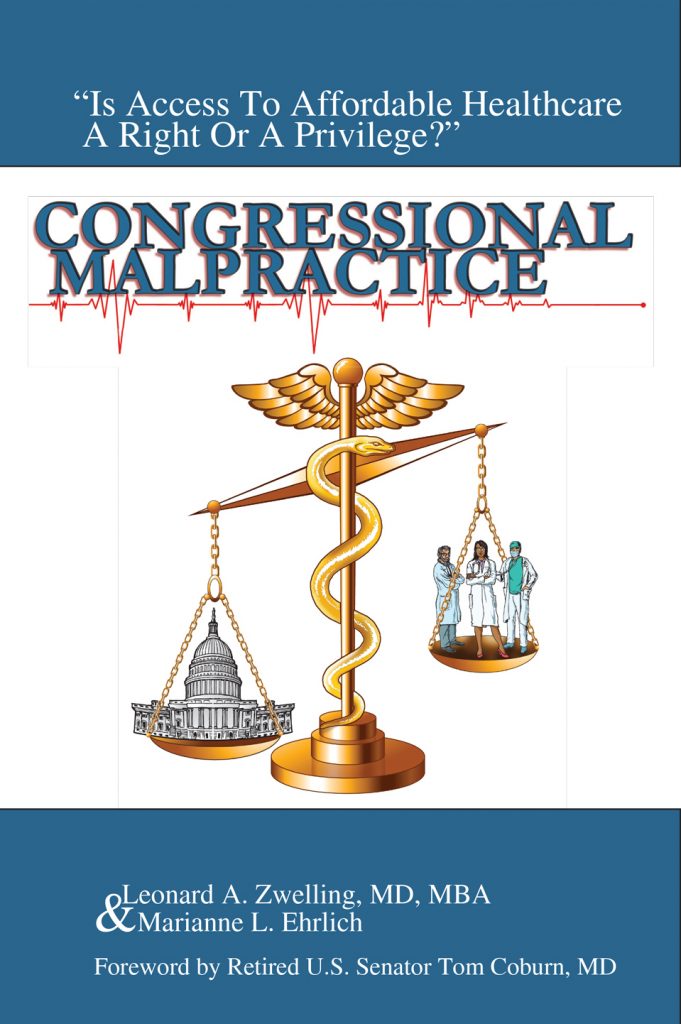Single Payer Makes Sense: An Argument
By
Leonard Zwelling, MD, MBA
America does not have a health care system. It has four of them.
One system is like that in most of Western Europe and Asia, with private providers and private non-profit insurance. In some cases the insurance can come from the government, or from private firms, but the basic coverage is not a for-profit insurance product. This insurance is similar to what many Americans receive through their employer although in America, a great deal of health insurance is from for profit companies .
The second system is socialized medicine. This is the care system if you are a veteran, an American Indian or in the military. The care is covered, usually in its entirety. This is like Great Britain.
The third system uses government-supplied insurance, paid for by tax revenues, but some of the same private doctors that care for group one can also provide care in this system. That’s Medicare and this bears resemblance to Canada.
Finally, there is sub-Saharan Africa where care is like that administered in an emergency room in the United States, ad hoc and triage. There usually is no insurance and is whatever- care-you-can-find. Having no health insurance is a health care risk factor.
If this is what we are calling “the health care system,” then there is no health care system.
Perhaps there ought to be.
ObamaCare expanded the number of people insured by giving many uninsured (such as those using emergency rooms as their primary source of care) the ability to buy insurance via their computer and develop a relationship with a physician. It also provided subsidies based on income level. Until recently, having health insurance has been mandatory, but after the 2017 Tax Bill passed, the individual mandate has been suspended. If a significant number of the young and well drop coverage, what that will do to everyone else’s premiums remains to be seen.
And that’s the real issue—money.
The failure of ObamaCare is not that it only increased access to a small percentage of the 50 million or so who had no insurance in 2009. The failure of ObamaCare is that it did nothing to reduce the cost of care. Concomitantly, it did nothing to increase the quality of health care.
Quality is a tough one. There is no agreement on what quality health care looks like. Is it rising patient satisfaction scores because there’s a Starbucks in the hospital lobby? Or is it having true metrics of outcomes of medical procedures so that you can know as much about your surgeon as you know about your cell phone?
Cost on the other hand is easy to measure. We know that approximately $3.2 trillion or almost 18% of GDP is too much—probably twice per capita what any other nation spends on health care. Why do we spend twice what others spend and still not have better outcomes? Life expectancy and infant mortality rates in the United States are not even close to being the best in the world.
There are several reasons.
First, we Americans love technology and we use a ton of it. The MRI has supplanted the physical exam as the first test used in many emergency rooms. That’s expensive.
Second, we are aging as a population and thus are more susceptible to costly, chronic diseases of heart, lung, liver and mind.
Third, we pay too much for drugs. By law the government cannot negotiate down drug prices for those who are Medicare covered, the people in America who are the most frequent users of prescription drugs.
Fourth, the overhead in health care is staggering. Many intermediaries inhabit the health care-industrial complex. Many provide no health care but take a piece of the action. Insurers are the most obvious.
What to do?
Clearly we need to develop our own unique universal health care system for America. One suggestion is the single payer system–using tax dollars to pay for health care–as Medicare does now. But that alone won’t control costs. Some Medicare policies, like the one for drug pricing, are as much a part of the problem as policies governing of the rest of the payers for health care.
Competition must be the answer. And it doesn’t have to be a bad word.
The government can collect the money to pay for everyone’s care, thus it is a single payer system by definition. Preventative care must become routine. That would be a really good way to reduce costs: a colonoscopy is a lot less expensive than the care of a patient whose colon cancer could have been prevented. Healthy behaviors must be rewarded. No smoking, reduced drinking and drug use and healthy habits should all be supported and rewarded in some fashion, although the resulting wellness might be its own reward. This concept of preventative care needs to be taught in elementary school, too.
There needs to be a national budget for health care. $3.2 trillion seems like quite enough on which to get by.
Fruitless testing and unnecessary procedures must stop. Defensive medicine, the ordering of tests to prevent doctors from being sued, can cease. How? The various disease-associated societies can develop hard and fast guidelines that, when followed, lead to the best possible outcomes at the most reasonable costs. Doctors who follow the guidelines cannot be sued for poor outcomes. This is doable.
Finally, patients should be allowed to choose their own doctors, but they need to be able to shop for qualified providers who charge reasonable fees. One way to do this is to limit the cost of doctor visits and procedures that the government will pay for. If you want to use a higher cost provider or seek a service not covered, you are free to do so—on your nickel.
I am sure that many people have even better ideas than mine. Some may want a more privatized solution than a single payer one. I am fine with that as long as everyone is covered, costs are contained, and quality is measured and communicated to consumers.
We will need more doctors. Medical students should be provided scholarships if they pay back their debt with national service after residency training.
I only hope that if Congress ever takes this up again, it aims a lot higher than it did with ObamaCare’s simply expanding access. Both cost and quality simply must be addressed if ever the lawmakers are going to solve the health care challenge. Allowing the current market to drive the response may result in fewer people having access, costs continuing to rise, and quality being a black box. None of these things are good for your health.




